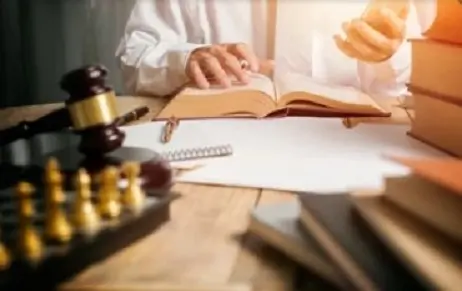Introduction A trademark helps a consumer obtain goods and services of a certain quality and reduces…
License to Translate a Literary Work
Introduction
The petitioner wants to translate and publish Madeleine Slade’s autobiography, “The Spirit’s Trip,” in Marathi. Madeleine Slade is more commonly known by her stage name, Mira Behn.
According to the decision, the petitioner is prepared and eager to pay royalties, but as of the present, they have been unable to track down any publishers. In order to obtain a mandatory licence, the petitioner went to court under Section 32 of the Copyright Act.
The petitioner further claimed that the translation of this autobiography into Marathi was done for public interest rather than for private or business gain. Section 32 requires that the work was (i) published in India, (ii) at least 7 years prior to application, and (iii) the petition is in the prescribed format – all of which were done in this case.
The Bombay High Court issued an order on October 11, 2022, directing the Registrar of Copyright to publish a notice regarding a request under Section 32 of the Copyright Act to translate Mira Behn’s autobiography, “The Spirit’s Pilgrimage,” from English to Marathi in the copyright journal and two newspapers. This may be the first instance in which the Court has announced a mandatory licence for a literary work.

An application for such a licence cannot be considered after the passage of seven years from the date the work was published (Section 32(1)): In this instance, the applicant claimed that since the book was released in 1960, 7 years had passed since then.
The translation of the book is generally absent (Section 32(4) Proviso (a): The petitioner contended that the author did not translate and publish the work in Marathi and that Ranga Marathe’s abbreviated translation, which Kirloskar Publishing released in 1971, is no longer in print.
The owner of the work either refused to grant permission to translate the work or could not be located despite the applicant’s best efforts (Section 32(4) provisos (b) and (c): The applicant claimed that neither the author nor any of her family members could be located. Orient Longmans Pvt. Ltd. in India and Longmans, Greens and Co. in Britain, the original publishers of the text, have undergone reorganisation, according to his subsequent argument, and Pearsons Education company has taken over the Longman name globally. He was informed that the company does not deal with autobiographies and is unrelated to Longmans after writing to the Orient Blackswan Pvt. Ltd. He stated that no reaction has been received from the Pearsons Education group.
The applicant’s suitability for the position (Section 32(4) proviso (d): The applicant said that he had read Marathi books since he was a little child and that he has a sizable library of Marathi books.
The applicant’s capacity to pay the copyright owner’s royalty (Section 32(4) Proviso (d): The petitioner claimed to be a solicitor with sufficient funds to pay the royalties.
The translated work’s suggested retail price (Section 32(2): The petitioner suggested that the translated book’s suggested retail price be about INR 450. He made it clear that he didn’t want to publish more than 1000 paperback copies, and since most authors only receive a maximum royalty of 7.5% to 8% for paperbacks, he agreed to pay 8% for the translated version, which would make the total royalty due Rs. 36,000 (8% X Rs. 450 per copy X 1000 copies).
Author : Tanya Saraswat, in case of any queries please contact/write back to us via email to [email protected] or at IIPRD.
Conclusion
Although it appears that either Section 31A or Section 32 might have been applied in this case, if the case goes all the way, it may provide a useful precedent that Section 32 was employed. This is due to the fact that, unlike Section 31A, Section 32 can be used if the original author/publisher is discovered and refuses permission to translate into another language, provided that 7 years have passed since the first publication, 3 years have passed if the translation is to a language commonly spoken in India and the purpose is academic (“teaching, scholarship, or research”), or even just 1 year has passed if the translation is to a language that is not commonly spoken in developing nations.
One of the reasons cited by the applicant in the present case for seeking the license to translate the work is the larger “public interest” involved and considering the diverse set of languages spoken in the country, the order will surely enable the widespread reach of the work among the Marathi speaking population.
References
- Lokesh Vyas & Praharsh Gour, Spicyip tidbits: Compulsory license on Mira Behn’s autobiography, and stricter test of similarity of marks for medicinal products Spicyip (2022), https://spicyip.com/2022/11/spicyip-tidbits-beginning-of-the-first-copyright-compulsory-license-case-in-india-and-a-case-deceptive-similarity-between-pharmaceutical-products.html (last visited Mar 31, 2023).
- Praharsh Gour & Nikhil Purohit, Bombay High Court Grants (the first?) section 32 license to translate a literary work in marathi Spicyip (2023), https://spicyip.com/2023/03/bombay-high-court-grants-perhaps-the-first-license-to-translate-a-literary-work-in-marathi.html (last visited Mar 31, 2023).



